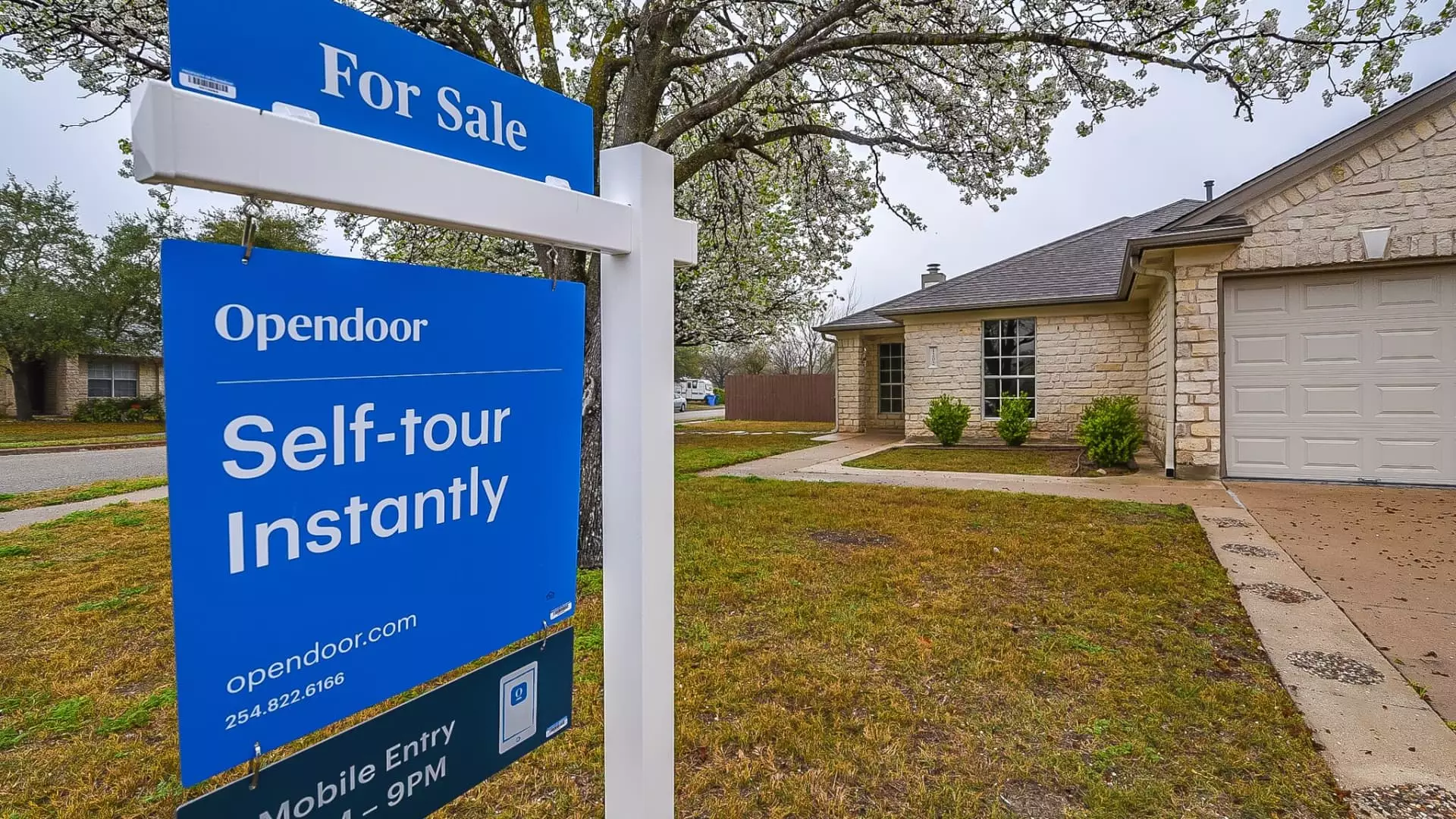In recent weeks, Opendoor has captured investor attention with a remarkable surge in its stock price, soaring nearly five times since July. Such a rebound from one of the market’s most battered real estate companies appears promising on the surface. However, a deeper analysis reveals that this rally may be more of a gambler’s gamble than a sign of sustainable growth. The company’s management publicly expressed gratitude for the newfound enthusiasm, yet their words cannot obscure the harsh realities lurking beneath the surface. The post-pandemic housing market, marked by rising interest rates and declining demand, continues to weigh heavily on Opendoor’s core business model. While the company’s pivot towards less capital-intensive referral models signals strategic flexibility, it also highlights an urgent need to redefine its value proposition amid challenging market conditions.
The Price Volatility and Skeptical Investor Sentiment
Despite the recent upward trajectory, the stock’s volatility remains a critical concern. After peaking on the heels of hedge fund manager Eric Jackson’s bullish stance—who projected a potential surge to $82—the stock quickly reverted to below $2 in extended trading. This sharp reversal underscores the volatility and perhaps the tenuous foundation of the current rally. Jackson’s optimism hinges on the hope that Opendoor will rebound with renewed revenue growth and regain market share, thereby attaining profitability. Yet, the firm’s latest financials do not support this outlook. In the second quarter, revenue ticked up modestly, but losses persisted — closing at $29 million, down from a much larger deficit a year prior. Forward-looking estimates portray a challenging outlook: projected revenues for the upcoming quarter could decline by over a third, with acquisition volumes shrinking sharply. These metrics suggest that the company’s bounce might be more temporary than transformational, fueled by speculative fervor rather than fundamental improvements.
The Strategic Shift: From Core Business to Diversification
Wheeler’s announced strategic pivot toward a less capital-intensive referral model indicates an acknowledgment of the limitations inherent in Opendoor’s original iBuying strategy. The company’s historic model depended heavily on buying and reselling homes swiftly—a process vulnerable to fluctuations in mortgage rates, housing supply, and buyer demand. With mortgage rates persistently high and the housing market weakening, the company’s revenues and volume of property transactions dwindled dramatically. Switching focus to a referral-based approach could stabilize cash flows and reduce risk, but this shift also introduces new challenges in building a sustainable revenue stream. It remains to be seen if this strategic shift will resonate with investors, many of whom have grown skeptical of Opendoor’s ability to achieve consistent profitability. Market sentiment suggests that while Opendoor is attempting to adapt, the path ahead is riddled with uncertainty, and the success of this transformation remains unproven.
A Critical Perspective on Opendoor’s Future Prospects
From a critical standpoint, Opendoor’s recent resurgence seems more like an opportunistic rally than a genuine turnaround. The surge in stock price appears driven by speculative betting rather than tangible fundamentals. Institutional investors and hedge funds, such as Jackson’s, are betting on a revival predicated on a return to growth, but such optimism hinges on a series of optimistic assumptions — that the housing market will stabilize, that the company can successfully execute its new referral strategy, and that broader economic conditions will favor real estate transactions. Given the persistent headwinds, such as rising interest rates, a cautious approach is warranted. Notably, the company’s decision to cancel its reverse split proposal indicates a strategic retreat, but it does not resolve the underlying issues—declining demand, slim margins, and the challenge of reorienting its business model.
While Wheeler’s comments about broadening Opendoor’s narrative to include more diverse parts of the real estate ecosystem are intriguing, they also sound like an attempt to divert attention from immediate financial struggles. Ultimately, investors should scrutinize whether this recent frenzy is an irrational exuberance fueled by speculators or a genuine signal that Opendoor has found a new sustainable footing. For now, the company remains at a crossroads—balancing between fleeting market euphoria and the daunting reality of a slow, uphill climb towards profitability, underpinned by a macroeconomic environment unfavorable to its core business.

